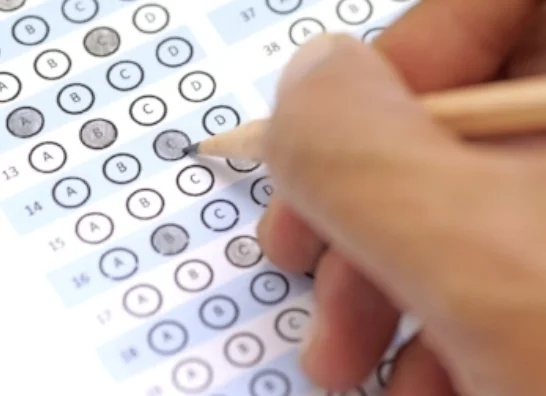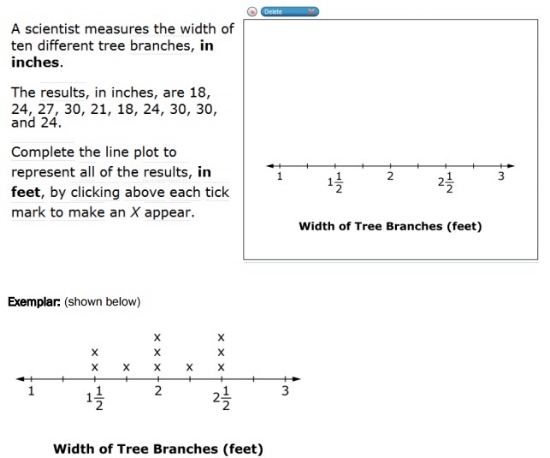Printable CAASPP Practice Test PDFs + Key Info on SBAC California
/The California Assessment of Student Performance and Progress (CAASPP) is a system of assessments established in 2014 to measure the progress of California public school students toward the Common Core State Standards (CCSS).
Understanding CAASPP can be complex, since several exams fall under the acronym, but in this article we’ll give you all the information you need, in addition to sample questions and tips.
The best way to prepare for these exams is by answering sample questions, so we’ll also provide you with printable CAASPP practice test PDFs. Click the button below to access the grade-level test you need. In addition, you will also receive a bonus PDF "5 Proven Test Prep Strategies for Using Practice Tests" to help you develop a study plan.
Grade 4 SBAC California or CAASPP
CAASPP Practice Tests Grade 4Grade 5 SBAC California or CAASPP
CAASPP Practice Tests Grade 5Grade 6 SBAC California or CAASPP
CAASPP Practice Tests Grade 6Grade 7 SBAC California or CAASPP
CAASPP Practice Tests Grade 7Grade 8 SBAC California or CAASPP
CAASPP Practice Tests Grade 8
We have a lot more information to cover, so let’s get started!
What is CAASPP?
The California Assessment of Student Performance and Progress consists of several different tests. The tests are designed to assess how well students in California public schools are progressing toward key academic skills and knowledge outlined by the Common Core State Standards (CCSS) and the California Next Generation Science standards.
The following assessments are part of CAASPP:
In the following sections, we’ll take a closer look at each of the CAASPP tests.
Smarter Balanced California
California is part of the Smarter Balanced Assessment Consortium (SBAC), a consortium of states committed to developing and consistently improving rigorous assessments aligned with Common Core.
SBAC member states administer Smarter Balanced assessments to their public school students. These assessments cover English Language Arts and Mathematics and are administered in grades 3-8 and once more in grade 11.
These assessments consist of two parts: a computer adaptive test and a Performance Task. On the computer adaptive test, questions become easier as students submit incorrect responses and more challenging as students answer questions correctly.
This is a departure from more traditional standardized tests, on which every child answers the same set of questions. The computer adaptive test allows for a more accurate measure of student ability.
Performance Tasks take about 45 minutes to complete and prompt students to apply grade level appropriate skills and knowledge, as well as critical thinking and problem solving, to respond to complex real-world problems.
For each grade level, SBAC tests require students to write and to solve multi-step, real world problems. The results of the assessment indicate both student achievement and student growth.
Questions include more traditional selected response items (otherwise known as multiple choice), the Performance Tasks, constructed response questions (written response), and non-traditional response items. The non-traditional response items ask students to drag and drop numbers or text, edit text, draw objects, complete a chart or graphic organizer, etc.
SBAC tests are untimed, allowing students to work to the best of their ability without the added pressure of a time constraint.
However, the estimated times for the assessments range from 2 hours and 30 minutes to 4 hours, depending on subject and grade level.
SBAC Mathematics
Smarter Balanced test questions are created on the basis of “content claims.” Content claims are brief statements about the skills and knowledge students are expected to demonstrate on the assessment. Each subject test has an overall content claim, as well as four more specific claims.
On SBAC Mathematics, the overall content claim for grades 3-8 is, “Students can demonstrate progress toward college and career readiness in mathematics.” For 11th grade students, the overall content claim is, “Students can demonstrate college and career readiness in mathematics.”
The four specific content claims for Mathematics are as follows:
SBAC - Grade 4 - Mathematics Practice Test - Sample Question2
SBAC - Grade 3 - Mathematics Modeling and Data Analysis Sample Question
On the Mathematics test, question types include multiple choice, short answer, longer “investigations,” and performance tasks.
Students may be asked to explain reasoning, critique or prove the logic of mathematical conjectures, develop or improve upon mathematical models, and plan, design, and evaluate tasks.
SBAC - Grade 5 - Mathematics Problem Solving - Sample Question
The major emphasis of the SBAC Mathematics test is the ability to apply mathematical concepts to complex real-world situations. Students must be able to reason mathematically and to justify and explain their reasoning.
Students should be able to identify key information in a practical situation and map the relationship using diagrams, graphs, formulas, etc.
This test is certainly challenging, but using the printable CASPP practice test PDFs can go a long way toward helping your child feel confident and prepared on test day.
SBAC English Language Arts
Similar to the overall claim for the SBAC Mathematics test, the overall claim for grades 3-8 on SBAC ELA is, “Students can demonstrate progress toward college and career readiness in English language arts and literacy.”
For eleventh grade students, the overall claim is: ““Students can demonstrate college and career readiness in English language arts and literacy.”
The four specific content claims are as follows:
SBAC - Grade 4 - ELA Practice Test - Sample Question
SBAC - Grade 3 - ELA PracticeTest - Sample Question
Students may be asked to write narrative, expository, and research-based texts, and they will need to be able to evaluate sources for relevancy and credibility.
Although there are some multiple choice questions on SBAC ELA, most will contain a second part asking students to identify evidence that supports their answer. Many of the questions require writing, although these are sometimes very short “brief writes.”
As with SBAC Mathematics, we strongly recommend using the printable CAASP practice test PDFs to help your child prepare for this unique and rigorous assessment.
Now that we’ve covered SBAC California, let’s take a brief look at the other CAASPP assessments.
The California Alternate Assessments (CAAs) are also for English Language Arts and Mathematics, and they are administered in grades 3-8 and again in grade 11.
As the name suggests, these tests serve as an alternate for the SBAC and are not given in addition to SBAC California.
The CAAs are designed for students with significant cognitive disabilities who are not able to complete the SBAC, even with accessibility supports in place.
To qualify for the CAAs, students must have an Individualized Education Plan (IEP) that indicates the student requires assessment with an alternate test.
CAA - Grade 5 - Math - Sample Question
Questions on the CAAs are based on alternate achievement standards created from the Common Core State Standards for students with significant cognitive disabilities. The CAAs have a limited number of questions and are much shorter than the SBAC.
CAA - Grade 5 - ELA - Sample Question
These tests are administered in a one-to-one setting by a teacher . Like the SBAC, the tests are computer adaptive , adjusting to the student’s ability level as the student progresses.
A CAA Science test is currently in the pilot stages, and it will be administered to eligible students in grades 5, 8, and one time in high school (grade 10, 11, or 12).
In addition to the CAA Science test, a California Science Test (CAST) is also being piloted. The test will be administered to students in grades 5, 8, and once in high school (grade 10, 11, or 12).
CAST questions are aligned with the California Next Generation Science Standards. This test will be computer based as well.
CAST - Grade 5 - Sample Question
The California Standards Test (CST) for Science, the California Modified Assessment (CMA) for Science, and the California Alternate Performance Assessment (CAPA) for Science will no longer be administered.
Like the CAA, the Standards Based Test in Spanish (STS) is an alternative, not an addition to, the SBAC.
The STS is for the English Language Arts test only, and it is available for grades 2-11. It is a multiple choice paper and pencil test.
The STS is for students who receive instruction in Spanish OR for Spanish speakers who have been enrolled in a United States school for less than 12 months. These students may take the STS to replace the SBAC ELA assessment.
The CAASPP assessment system is not as complicated as it may first appear. Essentially, all students in grades 3-8 and in grade 11 take the SBAC ELA and Mathematics unless these students have severe cognitive disabilities (CAA) or are English Language Learners who are new to the United States (STS).
Once the pilot for the California Science Test (CAST) has been completed, students will also take this assessment in grades 5, 8, and once in high school (grade 10, 11, or 12).
Because CAASPP exams are derived from the standards students are taught all year at school, it is essential for your child to pay attention in class, complete classwork and homework, and take notes. This is especially true in the key areas of English, Mathematics, and Science.
If your child seems to have difficulty in one of these core areas, consider hiring a tutor or asking for extra help from the teacher.
Although it is important to work hard in school in preparation for the CAASPP, it is equally important to build confidence and familiarity with test content. These tests are unique, so it is vital for your child to answer practice questions and complete full length practice tests.
Again, the printable CAASPP practice test PDFs are a great place to start. Discuss incorrect answers with your child, developing a more effective approach for this question type in the future.
Remind your child that the test is not timed, so there is no need to rush through and make careless errors. Prior to the big day, ensure that your child receives a solid night of sleep and a nutritious and filling breakfast.
If your child focuses at school, works on printable CAASPP practice test PDFs, and takes his or her time on test day, you should be confident that your child will turn in a stellar performance on the CAASPP.











